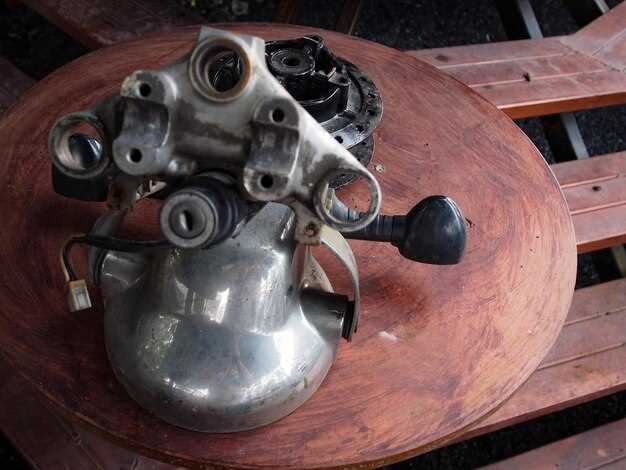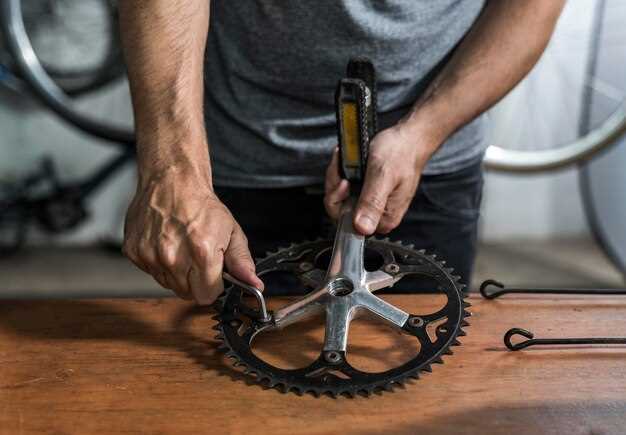

For enthusiasts of classic vintage bikes, the thrill of restoration is matched only by the challenge of sourcing genuine parts. As time passes, these iconic machines often require specialized components that can be difficult to locate. Authentic parts not only ensure the bike retains its original charm and functionality, but they also contribute to the overall value of the vintage model.
When sourcing bike parts, one must consider several factors, including compatibility, quality, and authenticity. Many vintage bike owners often seek out trusted suppliers who specialize in classic components, as this can greatly increase the chances of finding the right parts. It is vital to distinguish between original manufacturer parts and reproductions, as the latter may not meet the standards expected by discerning restorers.
The journey to find authentic bike parts can be both rewarding and educational. Engaging with online communities, attending vintage bike shows, and networking with other collectors are excellent strategies to uncover leads on hard-to-find components. Furthermore, restoring a classic bike with genuine parts not only enhances its performance but also preserves its historical integrity, creating a timeless piece of automotive artistry.
Identifying Reliable Sources for Vintage Bike Components

Sourcing authentic parts for vintage bikes can be a daunting task. It requires careful navigation through various marketplaces, both online and offline, to ensure that components are genuine and compatible with your specific model. Here are some strategies to help you identify reliable sources for vintage bike components.
1. Specialized Vintage Shops: Seek out shops that specialize in vintage bikes. These establishments often have knowledgeable staff who understand the nuances of classic models and can provide authentic parts. They may also offer restoration services and can help source rare components not readily available on the market.
2. Online Platforms: Utilize online marketplaces that cater specifically to vintage bike enthusiasts. Websites like eBay, Craigslist, or dedicated cycling forums can offer a wealth of components. Always check the seller’s rating, reviews, and return policy to assess reliability. Look for sellers who specialize in vintage parts, as they tend to prioritize authenticity.
3. Cycling Clubs and Communities: Engaging with local cycling clubs or online communities can be invaluable. These groups often have members who actively restore vintage bikes and can share trusted sources for parts. Additionally, networking within these communities might lead to opportunities for purchasing components directly from other enthusiasts.
4. Vintage Bike Shows: Attend vintage bike shows and swap meets. These events provide a unique opportunity to connect with vendors and fellow enthusiasts who specialize in sourcing authentic parts. You can often negotiate prices and directly inspect components before purchasing, ensuring quality and authenticity.
5. Manufacturer Contacts: If possible, reach out directly to manufacturers or authorized dealers of vintage motorcycle brands. Some may have leftover stock or can point you to reputable stores that still sell original parts. This approach guarantees that the components are authentic and made to fit your vintage bike.
6. Research and Documentation: Always do your homework. Research the specific parts you need, including their specifications and identification numbers. This knowledge will empower you to spot counterfeit components more easily. Document your findings and have comparison images on hand to verify authenticity.
Being thorough and diligent in your sourcing efforts will ensure that your vintage bike retains its authenticity and performs optimally. Prioritize quality over quantity, and take the time to establish connections with reliable sources to enhance your restoration journey.
Evaluating the Authenticity of Vintage Parts Before Purchase

When searching for vintage bike parts, ensuring their authenticity is crucial for both restoration integrity and investment value. Begin by researching the specific model and year of the bike to understand the original specifications. Each vintage bike has unique components; knowing these will help you identify genuine parts more effectively.
Inspect the parts thoroughly. Authentic vintage components often have distinct markings, stamps, or serial numbers that were unique to the manufacturer. These details can include brand logos and production codes that can be cross-referenced with reputable sources or databases online. When considering the purchase, ask the seller for proof of authenticity, such as original receipts, brochures, or any historical documents related to the parts.
Consider the condition of the parts. While some wear is expected in vintage bike components, significant damage or extensive restoration can reduce their value. Genuine parts will typically show signs of age that are consistent with their history. Take time to evaluate paint quality, rust, and any repairs made to the components.
Another important factor is the provenance of the parts. Parts with a transparent history–especially those with previous ownership by respected collectors or involvement in notable events–carry more weight and enhance authenticity. Networking with vintage bike communities can also provide insights into reputable sellers and help identify common pitfalls in the purchasing process.
Finally, consult with experts. If you’re uncertain about a part’s authenticity, seek advice from vintage bike specialists or mechanics. They can provide valuable insights that you might not consider, ensuring that your investment is both wise and authentic.
Restoration Techniques for Integrating Authentic Parts into Classic Bikes
Restoring a vintage bike requires meticulous attention to detail, especially when it comes to incorporating authentic parts. The first technique is thorough research. Collecting information on original specifications from manuals and vintage catalogs is vital to ensure that every component matches the bike’s history.
Next, sourcing genuine parts can be challenging. Utilize specialized online marketplaces, vintage bike shows, and forums dedicated to classic motorcycles to find rare or hard-to-find items. Authentic parts often come with specific markings or characteristics; be knowledgeable about these details to avoid replicas.
Once authentic parts are procured, proper preservation is essential. Clean and restore components with care, using methods suitable for their material. For instance, metal parts may need polishing or rust treatment, while leather seats may require conditioning to maintain their original quality.
When integrating these parts, ensuring compatibility is crucial. Test fit each component before final assembly to identify any modifications required. This limits damage to either the part or bike frame during the restoration process.
Finally, document the restoration process; take notes and photographs to create a record of the work completed. This documentation not only serves as a reference for future maintenance but also increases the bike’s value for collectors.






